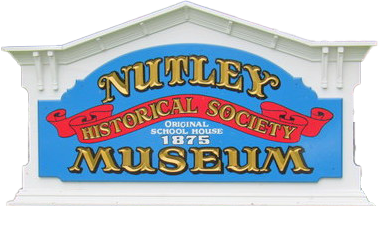75th Anniversary of Nutley Velodrome
By Michael C. Gabriele

Seventy-five years ago the world came to the Nutley Velodrome as a premier venue for the grand sport of international bicycle racing. The greatest bike riders from around the world traveled to Nutley during the 1930s to compete at the wooden “saucer” built by businessman and cycling enthusiast Joseph Miele.
The velodrome represents a colorful, turbulent period in Nutley’s history. It also carries the sad distinction as being the final chapter in the golden age of velodrome racing-a lost era when professional cycling was a major spectator sport in the United States. The Nutley track was hoping to rekindle interest in the bike game, following the closing of the Newark Velodrome three years earlier.
On Tuesday, April 18, 1933, the Nutley Town Commission, led by Mayor Walter F. Reinheimer, granted Miele permission to build a cycling track on a 12-acre lot along the northern side of Park Avenue near River Road; a site known as the Joyce Quarry. Today the property is the site of Little League fields and Nutley’s Department of Parks and Public Property building. Ground-breaking ceremonies for the Nutley Velodrome were held on April 19, 1933. Grandstand seating for the velodrome was built to accommodate 12,000 spectators. The oval saucer was built to a dimension one-seventh of a mile.
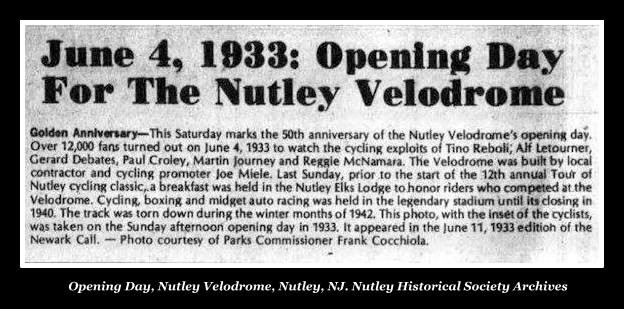
The Nutley Velodrome opened Sunday, June 4, 1933 before a standing-room-only crowd. Racing at the Nutley Velodrome was slated for Sunday afternoons and Wednesday evenings. The first night race was held June 7, 1933, drawing 7,500 fans.
The first two seasons-1933 and 1934-were successful as the saucer appeared to fill the void left by the old Newark Velodrome. World-class cycling stars like Cecil Walker, Alf Letourner, Gerard Debates, Tino Reboli, Torchy Peden and Franco Georgetti drew a steady stream of fans.
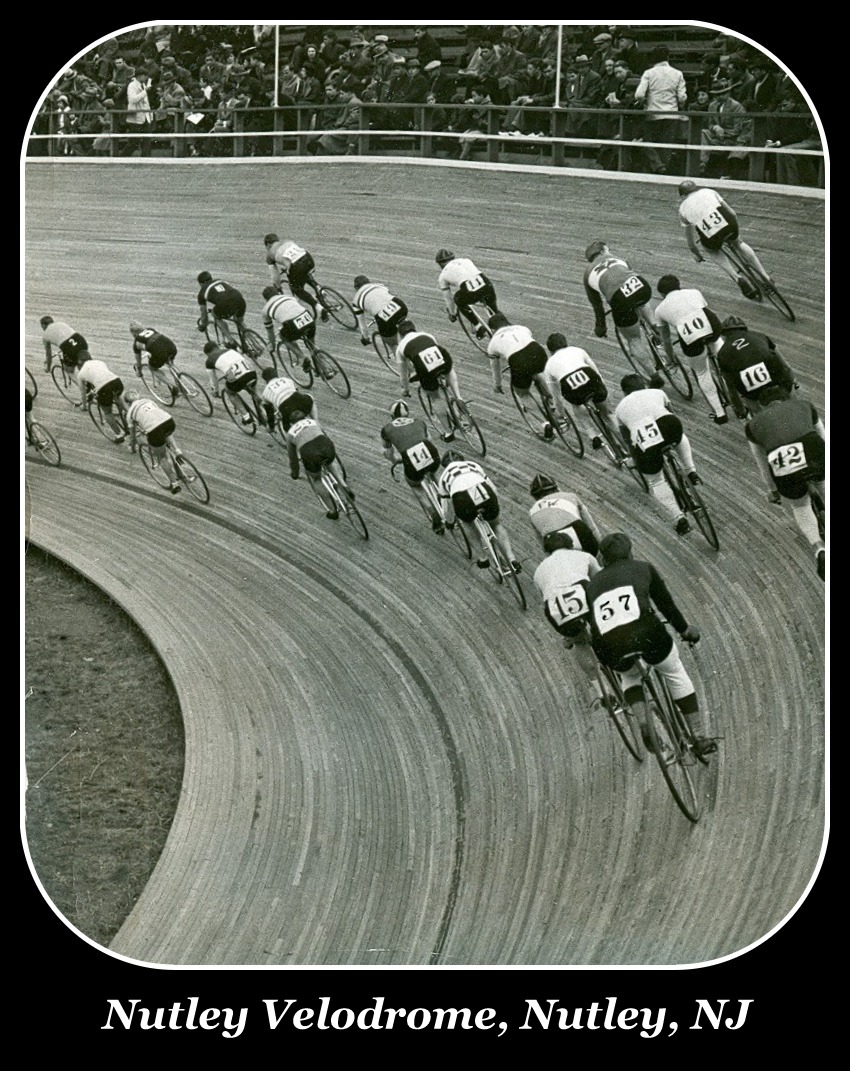
But while all seemed well, trouble was brewing. The partnership of Miele and Mendel broke up prior to the start of the 1935 season. Thought they made peace midway through that season, there were clear signs the cycling game was losing its loyal fan base-a trend similar to the decline seen during the final years at the Newark Velodrome.
On July 16, 1936, Miele removed himself from the cycling game and leased the velodrome’s operations to sports promoter Edward J. Malone and legendary Australian cycling champion Alf Goullet. However, two months later there were serious financial problems at the Nutley track.
Attendance declined, prize money began to dry up and investors became scarce. Near the end of the season there was a confrontation between the riders and management. The riders walked out, refusing to compete at the track as prize money could not be guaranteed.
The Nutley Velodrome suspended operations on Oct. 26, 1936. Goullet and Malone made another attempt to hold races in the 1937 season, but by Aug. 5 of that year operations again were halted due to lackluster fan support.
There were four boxing matches held at the Nutley Velodrome in an attempt to attract fans. The first bout was held on June 10, 1935.
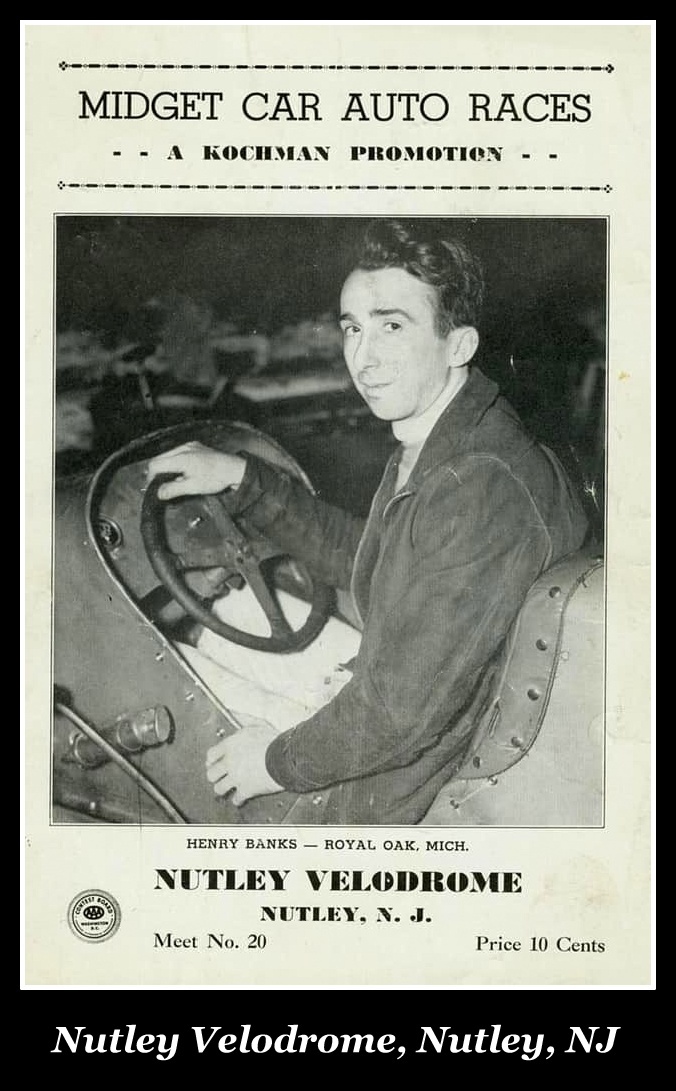
On Dec. 17, 1937, town commissioners granted Jack Kochman of Eastern Speedway Inc. a license to run “Midget” auto races at the wooden saucer. Midget auto racing evolved in California and New York during the early 1930s. Called “doodlebugs” due to their compact, beetle-like shape, these cars were designed with powerful, eight-cylinder engines.
The Nutley Velodrome would be one stop for Midget car racing on the eastern circuit. Races on the banked, wooden saucer would be unique, as most Midget car races were held on flat dirt tracks.
The American Automobile Association (AAA) sanctioned the Midget car races, which debuted at the Nutley Velodrome on Sunday, April 3, 1938.
Over 8,000 fans filled the grandstands. Immediately there were numerous complaints over Midget racing regarding the noise the cars created as well as concerns over track safety. Near the end of the first season, the worst fears were realized when Charlie Helliker, a racer from Long Branch, N.J., was killed on Oct. 9, 1938. Helliker hit another car and crashed into the track’s guard rail. His vehicle burst into flames, flipped over and crushed him.
Despite the fatality, Midget car races were a financial success that first season, attracting an estimated nearly 300,000 fans. Even thought there was growing public opposition to the high-octane spectacle, Midget car racing opened for its second season Sunday, March 19, 1939.
Henry Guerand, considered a big-name driver on the East Coast circuit, was competing at the saucer on April 2, 1939. Guerand, while driving in the 21st lap of the 35-lap main event that Sunday afternoon, struck the guard rail and his car began to fishtail out of control. He hit the guard rail a second time and the impact bumped him out of his car. While in this exposed position, he struck an overhanging steel fence support, which decapitated him.
Tragedy struck again on Aug. 26, 1939 as Karl Hattel crashed into the upper railing of the track’s east bank during the final heat of a five-mile race, which fractured his skull. He died hours later in the emergency room of St. Mary’s Hospital in Passaic.
Essex County suspended Midget races following the death of Hattel.
Nutley commissioners, on Sept. 8, 1939, announced that a town referendum would be held to let citizens decide the fate of Midget car races at the velodrome. Nutley voters struck down Midget auto racing at the velodrome on Nov. 10, 1939.
There were two ill-fated attempts to reinstall bike races at the velodrome. Carmine Bilotti organized several races late in 1939 and 1940, but those efforts failed. The track was torn down in 1942 and eventually Nutley established a public park on the site: Father Glotzbach Park, named after a popular priest from nearby Saint Mary’s Parish.
All but forgotten, the legacy of the Nutley Velodrome was rediscovered in a three-part series of page-one articles that appeared in the Jan. 22, 29 and Feb. 5, 1981 editions of The Nutley Sun. June 4 marks the 75th anniversary of the track.
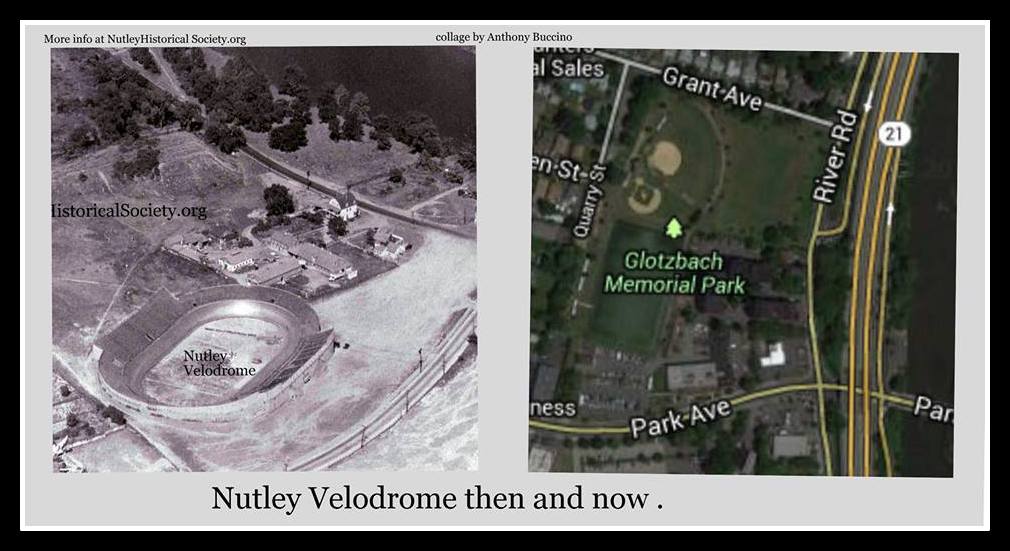
Gabriele was the editor of The Nutley Sun from 1983 to 1985 and has researched the Nutley Velodrome’s history for more than 25 years.
85th Anniversary of the Velodrome - June 4, 2018
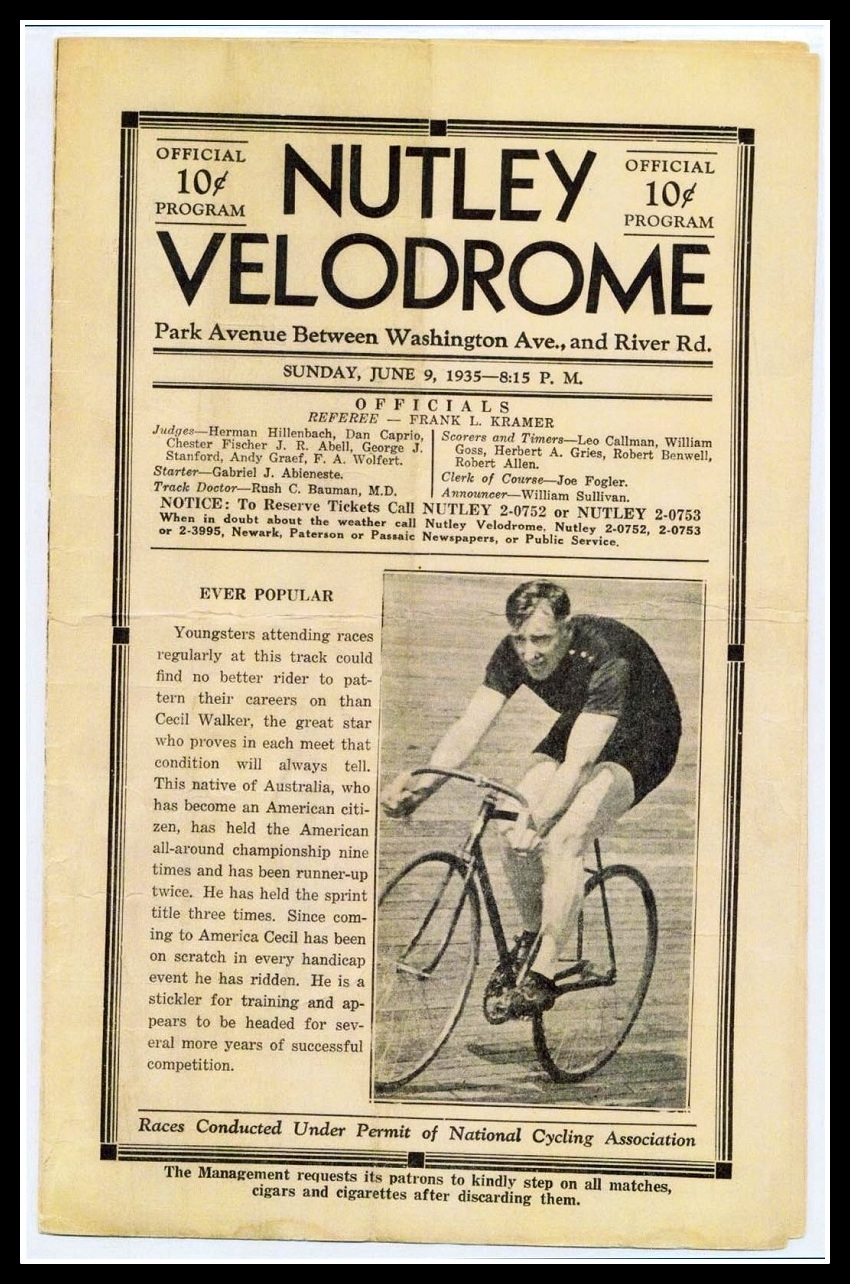
New Jersey Author Michael Gabriele marked the 85th anniversary of the opening of the legendary Nutley Velodrome with a program at the Nutley Museum on June 4, 2018.
Eighty-five years ago, the world’s top professional bike riders came to Nutley to compete at the legendary Nutley Velodrome. The cycling track opened on Sunday, June 4, 1933, before a standing-room-only crowd of 12,000 cycling fans. The velodrome was located on Park Avenue, occupying an area where the present-day Little League field and the township’s Parks and Public Properties building sits.
Joseph Miele, an entrepreneur from East Orange, stepped forward to fill the void left by the Newark Velodrome, which closed on Sept. 21, 1930. Professional cycling, a popular spectator sport in Newark for more than 40 years, saw its fan base sharply decline during the late 1920s. Miele thought a new velodrome in Nutley could rejuvenate the bike game.
U.S. Olympian Victor Hopkins made his debut at the track on June 7, 1933—the first Wednesday night race at the velodrome, which drew over 7,000 fans. International sprint champion and Newark native Bill Honeman, wearing his eye-catching “Stars and Stripes” racing outfit, made his first appearance at the Nutley track on June 14, 1933, winning the one-mile pro race.
The velodrome enjoyed success during its first two seasons, but by 1935 the fan base declined, much like it did at the Newark track. On Sept. 15, 1940 the Nutley Velodrome closed its gates for the last time. The golden era of U.S. velodrome cycling came to an end and the track was demolished in February 1942.
Gabriele is a member of the executive board of the Nutley Historical Society. In 2011, he wrote a book titled “The Golden Age of Bicycle Racing in New Jersey,” published by The History Press, which detailed the history of professional bicycle racing in the Garden State.
